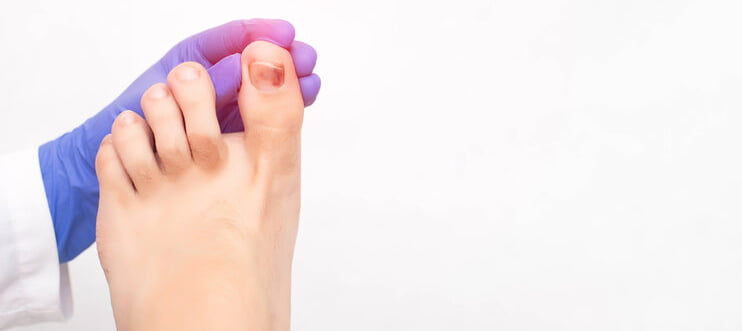Updated 15 September 2021 | Approved By Dr. Umberto Russo
What are Chilblains?
Chilblains or perniosis is an uncommon inflammatory skin condition that mainly occurs during colder temperatures. Patients will experience red, swollen and itchy patches around the body, particularly at the body’s extremities, such as the toes and fingers. This condition is typically caused by an abnormal response from the blood vessels to cold and damp climates. Fortunately, most people with chilblains will recover over time (particularly as the weather becomes warmer). Other conditions, such as frost-bite, arthritis and gout, can sometimes be mistaken for chilblains. Consulting a GP will be crucial for receiving the appropriate diagnosis and recommendations for a faster recovery.Types of Chilblains
Primary chilblains occur idiopathically. This means that there are no apparent causes. On the other hand, secondary chilblains can usually be traced back to an underlying health condition (e.g. bone disorders, inflammatory conditions, etc.)Chilblains Symptoms
- Patchy discolourations (especially red) around the extremities (e.g. toes and fingers)
- Itchy skin
- Swelling, particularly at exposed extremities, including the toes, feet and fingers
- Burning sensation of the affected areas
- Cracking and dry skin
Chilblains Risk Factors
Risk factors are personal and environmental characteristics that increase the likelihood of developing this condition. These include:- Where you live: Those who reside in colder and damper areas, such as certain parts of the UK and Europe [6].
- Gender: Women tend to be more prone to chilblains than other genders.
- Smokers: Smoking reduces blood flow around the body.
- Pre-existing conditions: Those with conditions that affect blood flow, such as high blood pressure and Raynaud’s Disease, are more prone to chilblains.
Chilblains Causes
What causes chilblains?
Cold climates and sudden temperature changes are the most common causes of chilblains. Scientists suspect that chilblains originate from vasospasm of the blood vessels when exposed to the cold [1]. Vasospasms occur due to the sudden contraction of the arteries which carry the blood around the body. These vasospasms can affect the blood flow to the surrounding tissue, including the skin and muscles. Over time, these changes can lead to symptoms, such as inflammation and swelling around the skin (particularly to areas that are exposed to the cold).Raynaud’s Disease
People who have Raynaud’s Disease also report experiencing chilblains [2]. This is a common condition that is seen in up to 14-20% of the population [3]. It’s a condition characterised by discoloured hand digits, which arises from reduced blood supply to certain areas due to vasospasms of the blood vessels. Similar to chilblains, cold weather also exacerbates Raynaud’s Disease.Tests and Diagnosis
Chilblains are usually diagnosed after a thorough questioning and physical examination from a GP. Generally, no further assessments will be required. Although, depending on your presentation, your GP may opt for skin biopsies and/or blood tests to rule out other conditions [4].Are Chilblains Contagious?
Chilblains are not contagious. However, there has recently been some research that shows links COVID infections to the development of chilblains [5].Chilblains Treatment
After getting a diagnosis from a GP, the next step will be to figure out how to treat chilblains. Usually, only lifestyle modifications will be required, although additional treatments may be required if symptoms are not settling.How to get rid of chilblains quickly?
This is a common question many GPs will hear from patients. However, it can take time for the inflammation, pain and other symptoms to settle.Lifestyle Modifications
The first line of treatment is to find strategies to help reduce any cold stimulus. Simple lifestyle modifications, such as wearing warm footwear, gloves and socks, may help accelerate recovery. Additionally, keeping the body warm through thicker clothing, avoiding going outside when it’s cold, and applying lanolin cream may also be beneficial. Cessation of smoking has been another strategy to combat chilblains because of its capacity to affect blood flow.Chilblains ointment/creams and medications
If symptoms don’t settle, chilblains cream and/or medications can also be introduced [6]. One of which includes a topical corticosteroid that can be directly applied to the skin to help reduce long-term inflammation. Nifedipine, which is a blood pressure medication, can also be prescribed to improve blood flow [6].Chilblains Recovery
Chilblains are usually episodic. Symptoms often appear for a short period (usually during colder weather) but eventually disappear. Patients typically report that their signs of chilblains may fluctuate during winter months and resolve during hotter seasons (e.g. spring, summer). This is why being proactive with lifestyle changes is crucial for recovery. Generally, these flare-ups will only last between 2-3 weeks before going away [7]. Preventing chilblains through lifestyle modifications should be the focus during cool temperature changes.Complications
Generally, most people will recover from chilblains without any complications. However, a prolonged reduction of blood supply can lead to tissue death and infection. Sometimes, chilblains can also be an indicator of other conditions, such as lupus or blood disorders. If there are any ongoing concerns, such as increased inflammation or swelling, a GP should be consulted immediately.We're Here to Help
Receiving quality care from highly experienced doctors is essential for a prompt diagnosis and receiving the correct medical treatment. With 24-7 Medicare, you can experience telemedicine from the convenience of your own home. Our friendly online doctors will be available 24/7 for a consultation, anytime and anywhere, in Australia.
To make a booking, simply click on 'Book A GP' below.
References
- https://diseasesdic.com/chilblains-pathophysiology-risk-factors-and-diagnosis/
- https://www.sruk.co.uk/scleroderma/scleroderma-and-your-body/hands-and-feet/
- Temprano, K. K. (2016). A Review of Raynaud’s disease. Missouri medicine, 113(2), 123.
- https://dermnetnz.org/topics/chilblains/
- Mohan, V., & Lind, R. (2020). Chilblains in COVID-19 infection. Cureus, 12(7).
- Whitman, P. A., & Crane, J. S. (2019). Pernio.
- https://www.nhs.uk/conditions/chilblains/

